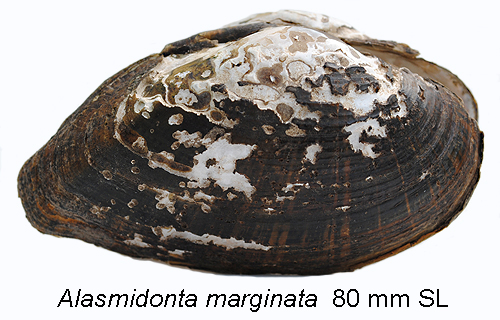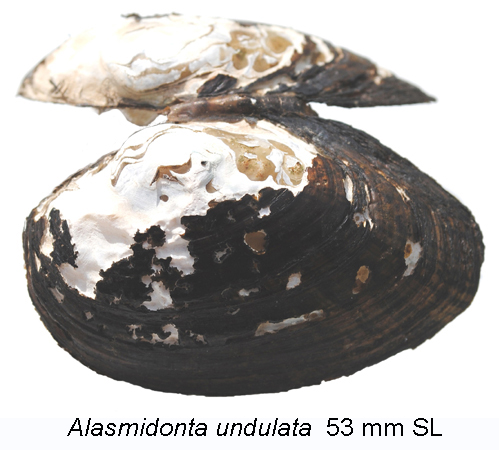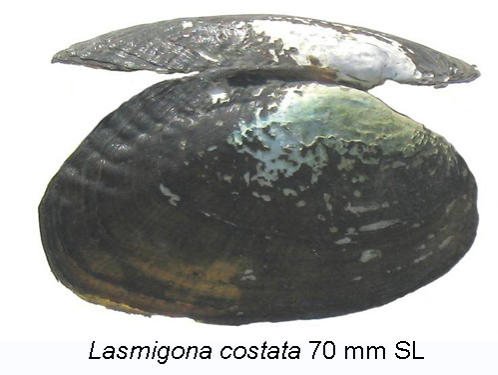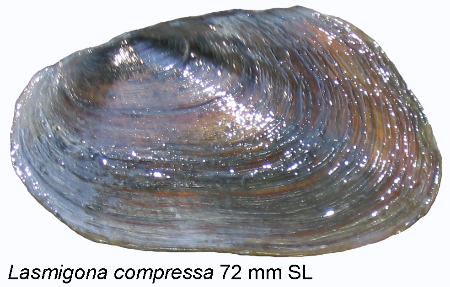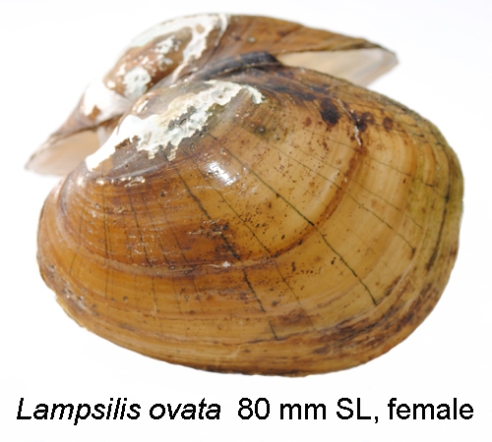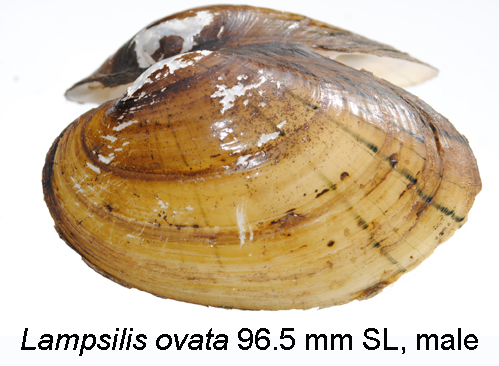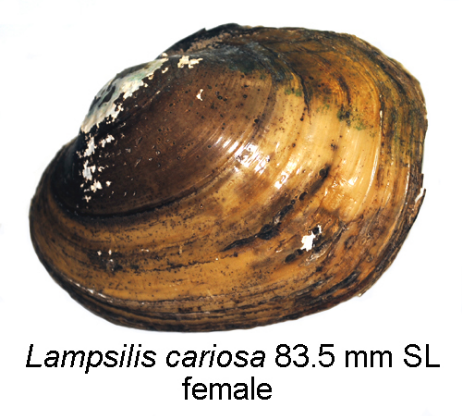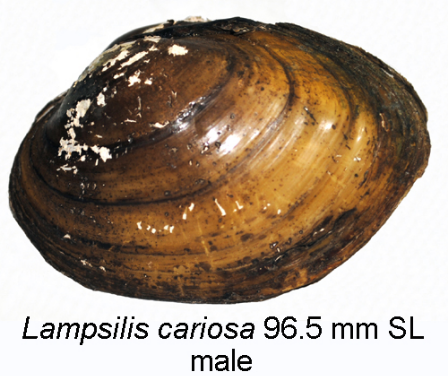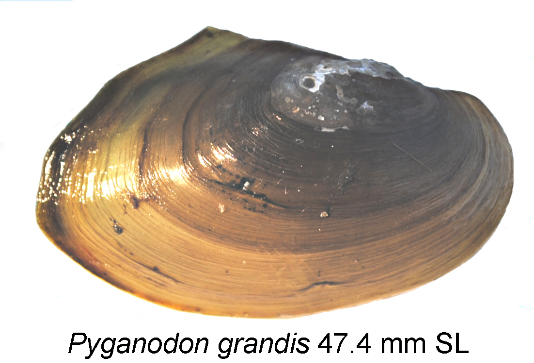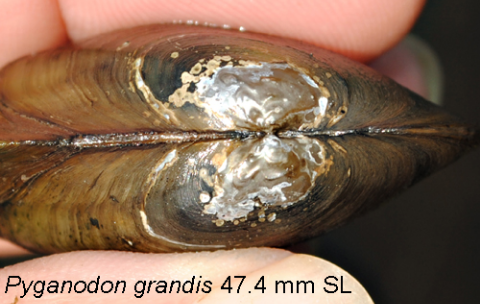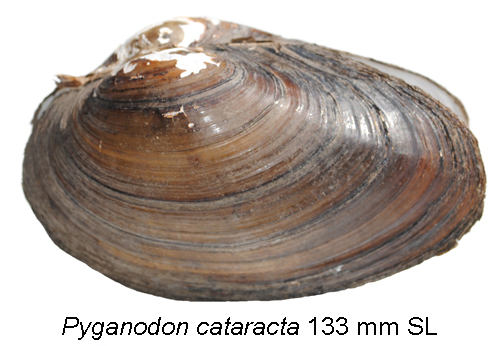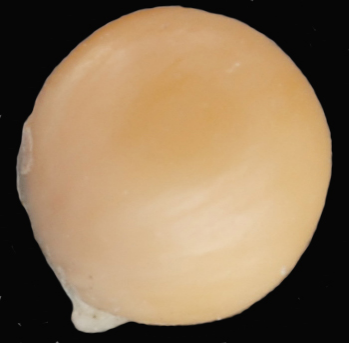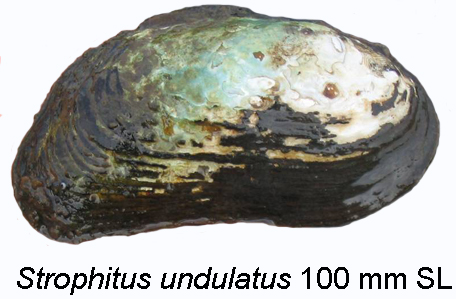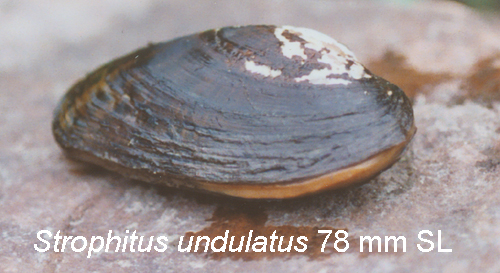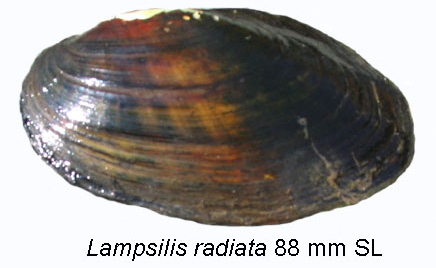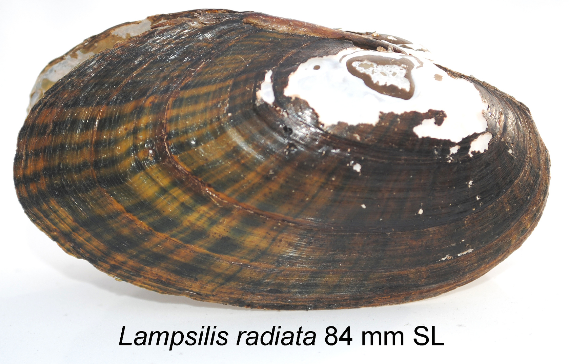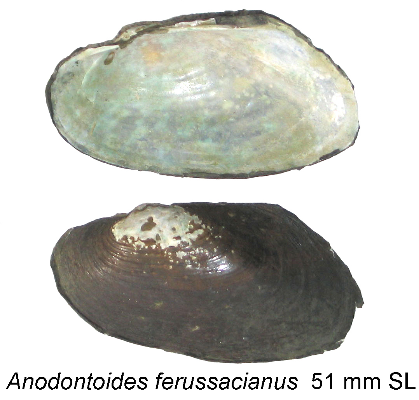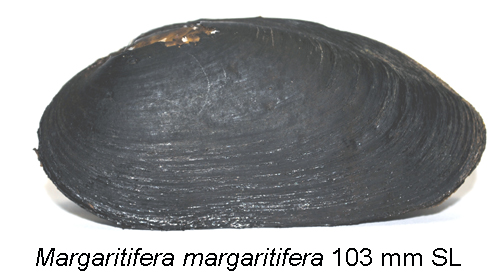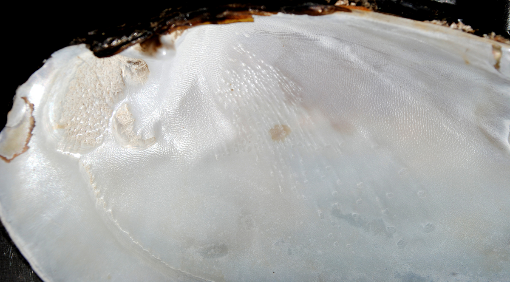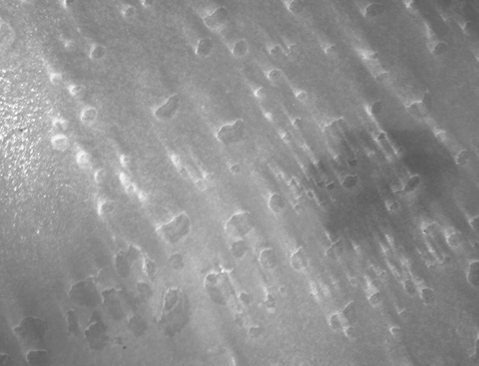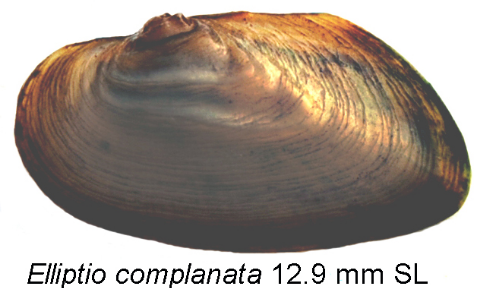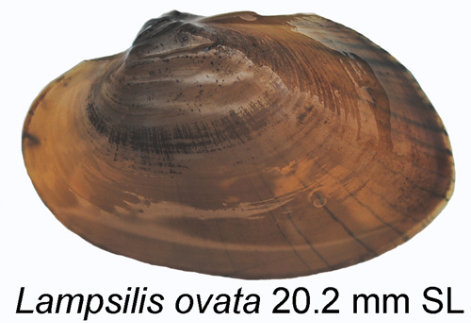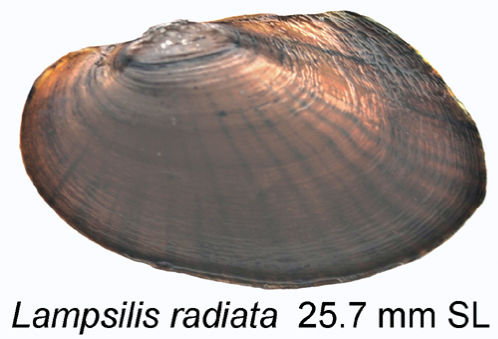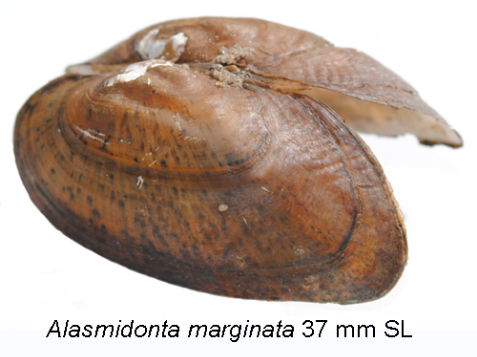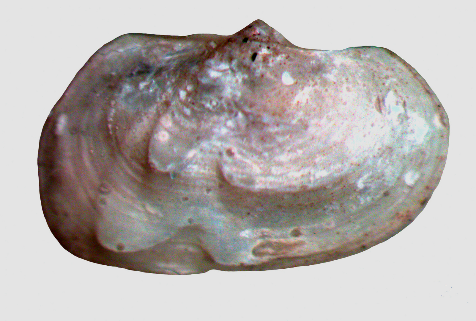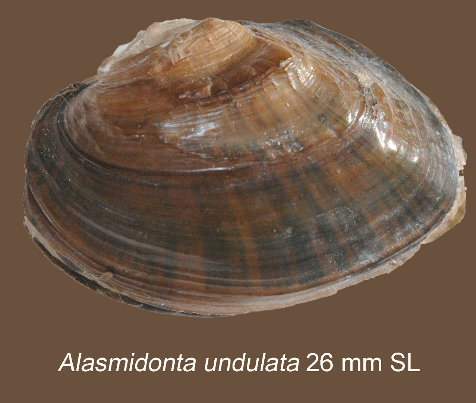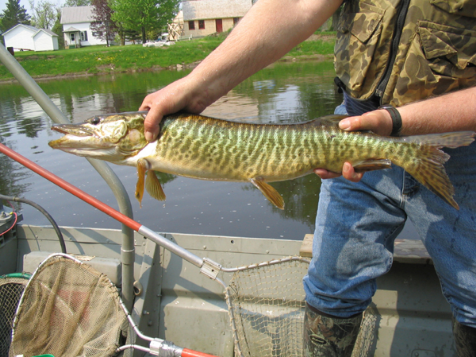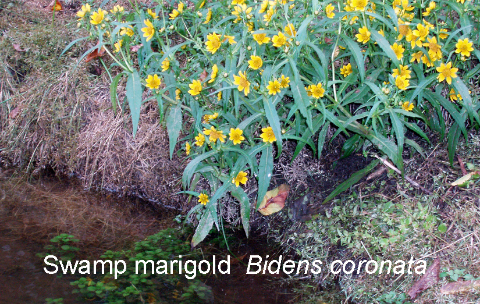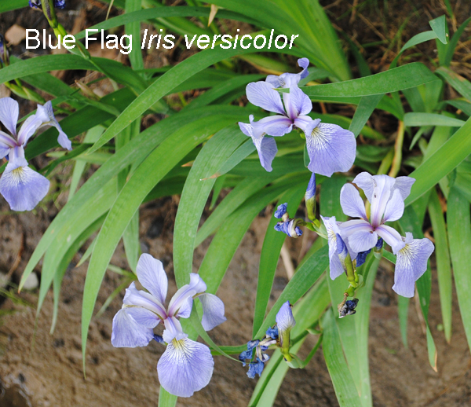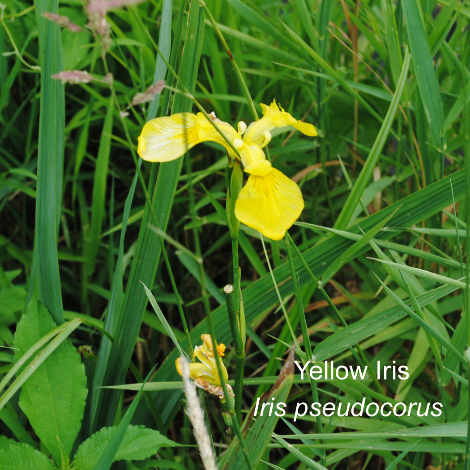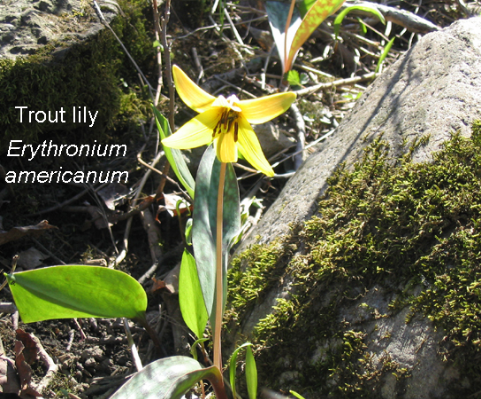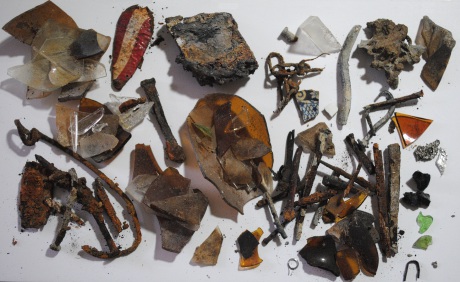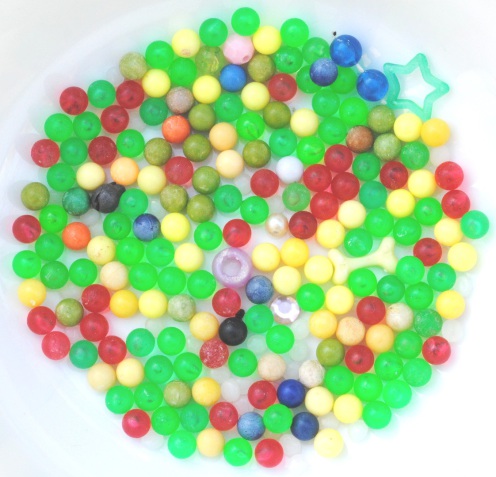
Photo Gallery
These photographs show examples of the animal and plant species collected in various studies, starting with adult and juvenile mussels, followed by fish and plants, and human-produced pollution.
Adult mussels
The most recent consensus on identification of L. ovata suggests that the examples shown here are actually L. cardium as they are from the St. Lawrence River drainage.
The ridges on the beak in this species are uneven in height while the ridges on P. cataracta are nearly equal in height. Erosion of the beak, and the ridges, can make this characteristic unreliable in some individuals.
This is the only pearl found in more than 4,000 mussels from the Salmon and Little Salmon rivers. It is 5 mm in diameter and came from a Pyganodon cataracta mussel at 122.5 mm SL.
Strophitus has an orange foot as does Alasmidonta.
Most Lampsilis radiata from the Salmon River are quite dark with few visible color rays but a few occur that are not.
Margaritifera margaritifera was found in the Salmon River in August, 2012, two in muskrat middens and one living in a riffle. These three individuals had the 'pores' that are characteristic of this species (small dots in the center of the photo, and in a close-up in the next photo), however, only 7% of the shells of this species found in Scriba Creek, NY, had 'pores', so this characteristic can be variable by location.
Small dots below are pores; a close-up of pores shown in the next photo
Juvenile mussels
More than 200 juveniles (shell length <40 mm) of seven species have been collected from 2002 to 2012 in the Salmon River study, dominated by Elliptio (90%). The shortest mussel was 2 mm SL; 83% ranged from 10 to 29 mm. Two transects in the Little Salmon River have produced 93% of the juveniles collected. The following pictures show six of the species.
Lasmigona compressa 6.1 mm SL
Fish
This is a northern pikeXmuskellunge hybrid in the Salmon River, prior to dam removal. Hybrids are known from the St. Lawrence River but they are not common.
Plants
Several of these are now found along the banks of the Salmon River, along with blue and yellow iris (an invasive species).
Canada lily was found on the Salmon River, NY.
Trout lilies were found along South Sandy Creek, New York, during the assessment of the Monitor Mills Dam.
Human-produced pollution
These items were collected in benthic samples from the Salmon and Little Salmon rivers. It is primarily glass and nails with some ceramics and plastic. Whole glass
bottles, auto tires and steel wheels, and an engine block were also found.
Over eight summers, my sister and I have collected plastic beads along the shore of Little Keweenaw Bay, in Lake Superior, Michigan (Lat. 47.195N; Long. -88.150W). We have found 370 beads (40% green, 24% yellow, 24% red, plus six other colors) that are 5 mm in diameter, and 95 nurdles (4 mm). These are larger than the microbeads used in health products. These nurdles are probably from shipping waste (cargo sweeping), the shipping lane is about 130 km east of the bay, and are brought to the shore by wind. There is little water current (<1 cm/s) in this area. Wikipedia shows pellets for airsoft guns that are the same size and weight as most of the beads we have found.
